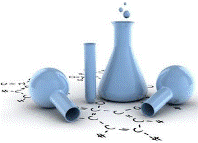Chemical and Biomolecular Engineering, Department of
Date of this Version
11-17-2020
Document Type
Article
Citation
J. Clin. Med. 2020, 9, 3684; doi:10.3390/jcm9113684
Abstract
Current antifibrinolytic agents reduce blood loss by inhibiting plasmin active sites (e.g., aprotinin) or by preventing plasminogen/tissue plasminogen activator (tPA) binding to fibrin clots (e.g., ε-aminocaproic acid and tranexamic acid); however, they have adverse side effects. Here, we expressed 60-residue (NH2NAE . . . IEKCOOH) Kunitz domain1 (KD1) mutants of human tissue factor pathway inhibitor type-2 that inhibit plasmin as well as plasminogen activation. A single (KD1-L17R-KCOOH) and a double mutant (KD1-Y11T/L17R- KCOOH) were expressed in Escherichia coli as His-tagged constructs, each with enterokinase cleavage sites. KD1-Y11T/L17R-KCOOH was also expressed in Pichia pastoris. KD1-Y11T/L17R-KCOOH inhibited plasmin comparably to aprotinin and bound to the kringle domains of plasminogen/plasmin and tPA with Kd of ~50 nM and ~35 nM, respectively. Importantly, compared to aprotinin, KD1-L17R-KCOOH and KD1-Y11T/L17R-KCOOH did not inhibit kallikrein. Moreover, the antifibrinolytic potential of KD1-Y11T/L17R-KCOOH was better than that of KD1-L17R-KCOOH and similar to that of aprotinin in plasma clot-lysis assays. In thromboelastography experiments, KD1-Y11T/L17R-KCOOH was shown to inhibit fibrinolysis in a dose dependent manner and was comparable to aprotinin at a higher concentration. Further, KD1-Y11T/L17R-KCOOH did not induce cytotoxicity in primary human endothelial cells or fibroblasts. We conclude that KD1-Y11T/L17R-KCOOH is comparable to aprotinin, the most potent known inhibitor of plasmin and can be produced in large amounts using Pichia.



Comments
CC-BY